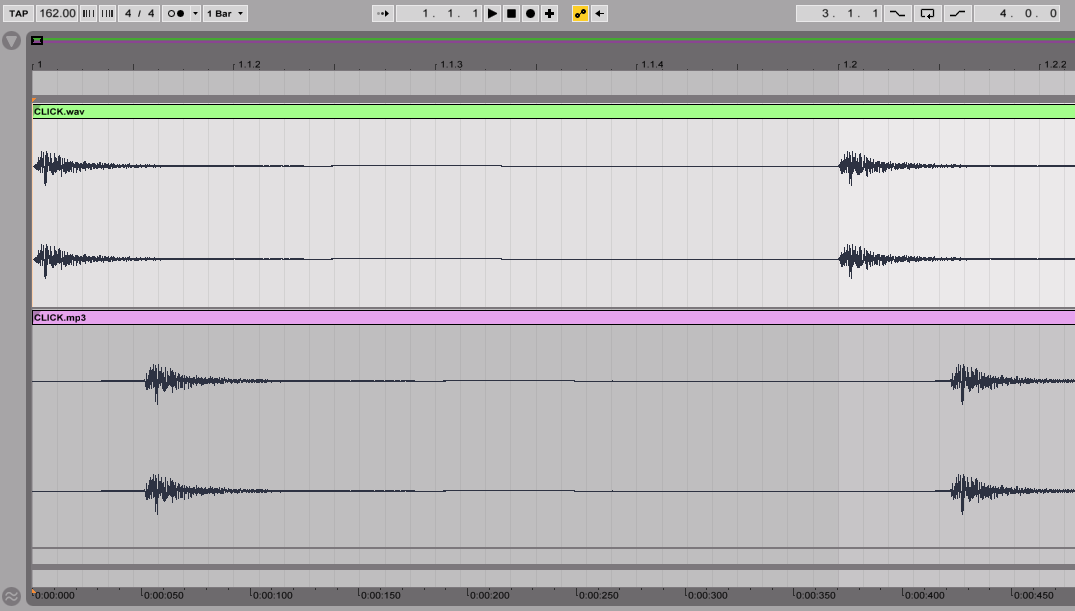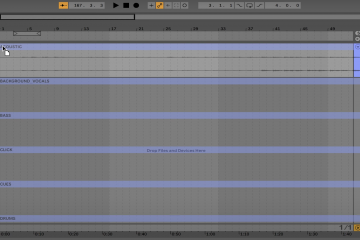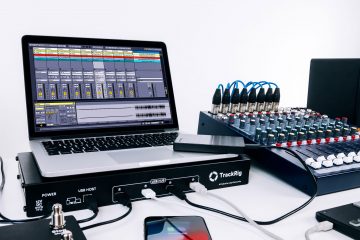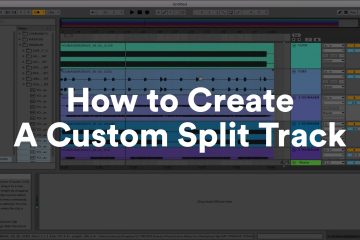Why MP3s in Ableton Are the Worst.

I often hear from people who say they are running Multitracks in Ableton Live, but can’t seem to get them to be in-sync with the Ableton metronome no matter what they do.
This is a frustrating problem. It occurs whether they have “Warping” turned on or not, so this is not a Warping related issue. The BPM of the session is set correctly, but the Ableton metronome is still slightly out of time with the multitracks or printed click track. If you’ve had this problem, it’s probably been the most noticeable if you have a printed Click audio track and have the Ableton Metronome turned on as well – they both sound a little “off” of each other, and the printed Click is slightly behind. Here is an audio example for you:
So, What’s the Problem?
99% of the time I hear about this problem, it’s because the multitracks being used are MP3s and not WAVs. I’m going to let you in on a little secret… are you ready? MP3s are the worst.
Haha… ok, but really. For multiple reasons:
- MP3s are compressed audio files… which means that to get a smaller file size, audio quality was compromised. If you’re serious about running tracks on stage, the last thing you want is bad sounding audio.
- When WAV files (the original, uncompressed audio file) is converted to an MP3, the MP3 conversion codec adds it’s own signature to the audio file. The “signature” is basically milliseconds of time that is added to the audio file itself. But where? The WORST place possible… at the beginning of the audio file!
Here are a few images that show you what I’m talking about. Notice below I have 2 tracks. The top track (green) is an uncompressed WAV file of a Click. The bottom track (purple) is a compressed, mp3 version of the exact same file. I have the tempo of the Ableton session set to the original tempo of the song (162 BPM). You can see that the WAV file lines up perfectly with the grid. The downbeat of the Click lines up perfectly at bar 1.1.1. However, you’ll see that the mp3 track is slightly off… or late.
The empty space that you see at the beginning of the mp3 file is the “signature” I was telling you about. The MP3 codec adds it’s signature, or time stamp, at the beginning of the audio file. This is ok when you’re listening to something in iTunes, but when you’re running multitracks on stage, the last thing you want is added time at the beginning of a stem. That “extra time” will throw off the timing of all of your multi tracks and make it so they will not line up with each other in Ableton grid.
Why use Ableton’s Grid? For a few reasons.
- Ableton is a powerful audio editing software… not just something to playback audio. If you want to just playback audio, stick with iTunes. Not using Ableton’s grid is ignoring the powerful features that Ableton has to offer for editing, re-arranging, customizing and recording audio.
- If you want to use warping in Ableton Live to change the tempo or change the pitch of your audio, it’s best if you are on the Ableton grid.
- If you’re jumping around to different sections of the song with a foot controller, or doing live Looping, you want to make sure you are on the Ableton grid.
How to Solve the Problem
- Best way to solve the problem is to use WAV files in the first place. ALL audio that you download from LoopCommunity.com comes as high-quality WAV files. File Size is not as important as Quality and Usability. Not all sites provide you with WAV files, so be aware of what types of files you are purchasing.
- You can fix your MP3 files by taking them into Arrangement View and trimming off the first few milliseconds of time. Line your files up in the Ableton grid, trim back the extra time and re-export them as WAV files.
- Turn off the Ableton metronome, ignore the problem and forfeit using some of the most powerful features of Ableton Live.
Stick with WAVs. Your Ableton life will be Easier.
I’ve talked to many people who are frustrated by this problem and I hope this post helps solve the issue for someone. If you guys have any questions or comments, please post below!




